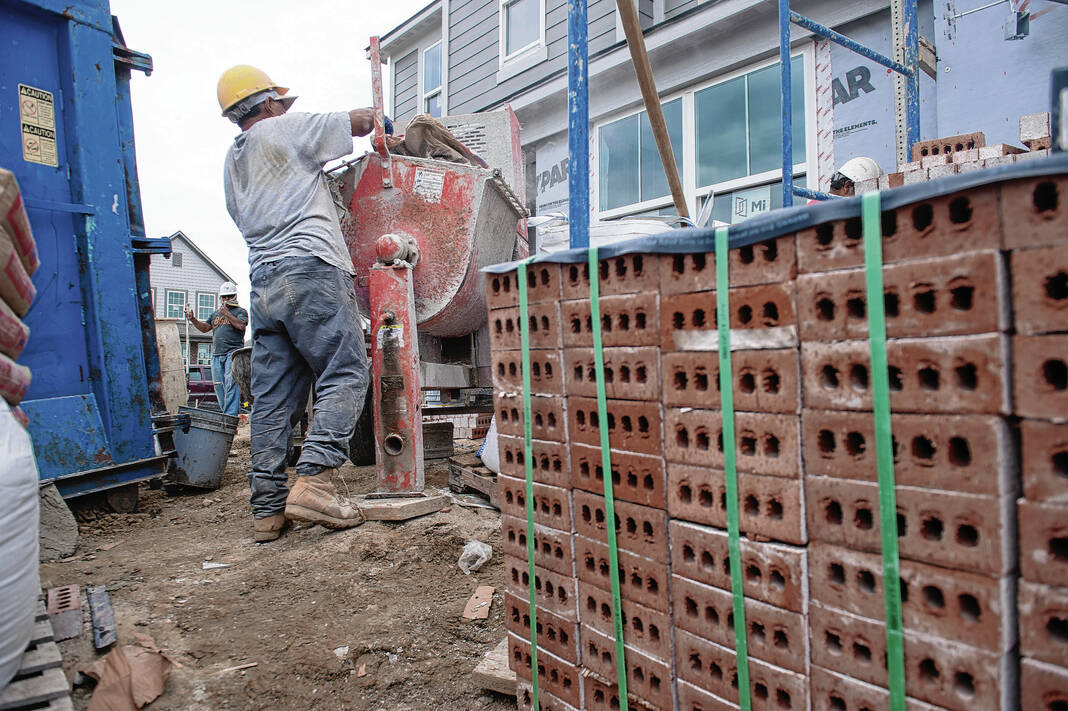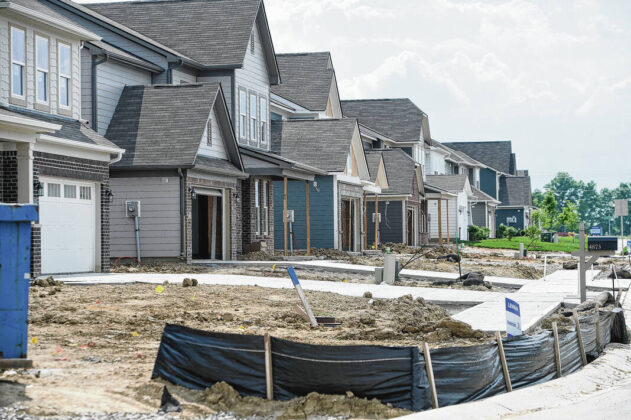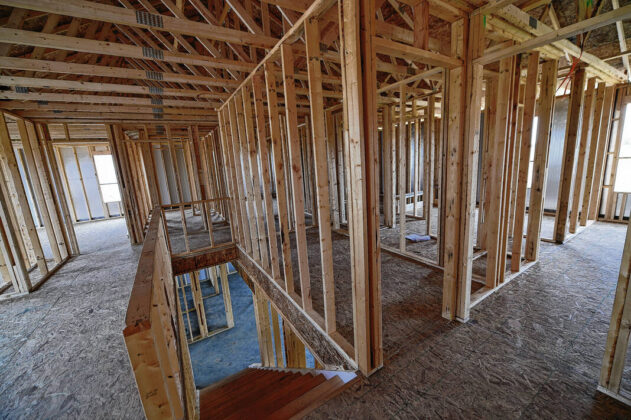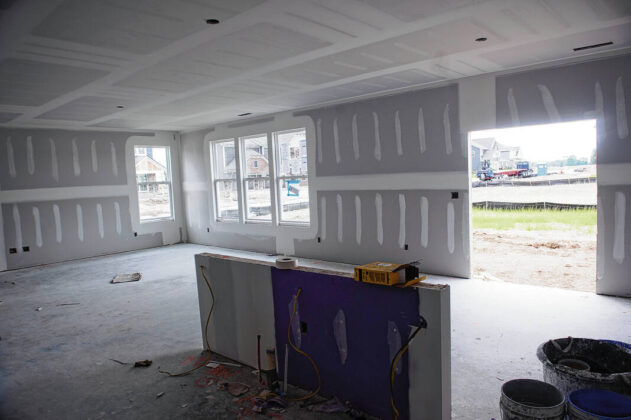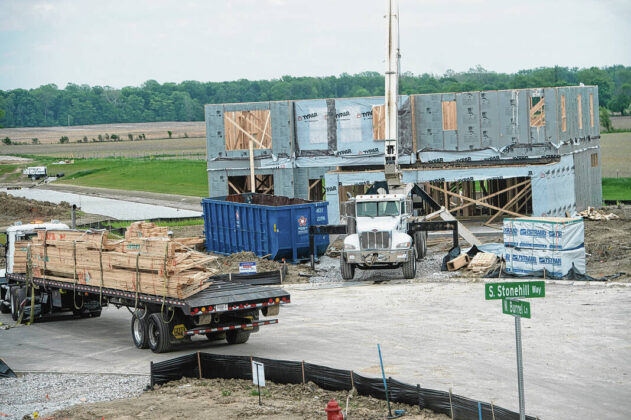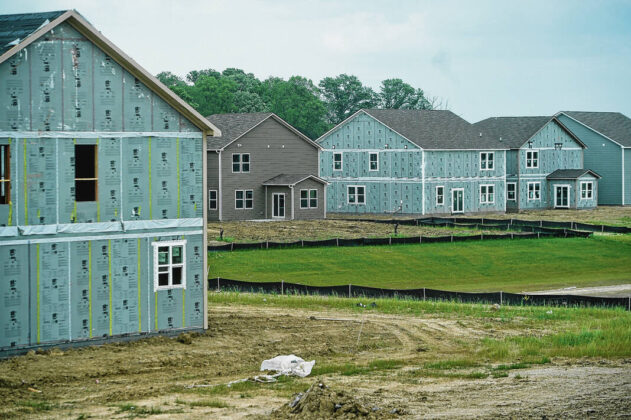HANCOCK COUNTY – Experts report a slowdown in residential development across the region, and expect it to continue.
Hancock County, one of the fastest growing counties in the state, has been an outlier amid that trend. Views vary over whether it will continue, however.
The Builders Association of Greater Indianapolis cites the decrease among home construction and purchases. Of the nine counties in central Indiana it represents builders in, all but two are seeing drops in single-family building permits so far this year.
Hancock County is one of the deviations, and is seeing a 21% increase in single-family permits.
BAGI predicts new construction home sales throughout the region will continue to slow by 25% through 2023.
The organization reports challenges including labor shortages, limited lot availability and material delays. BAGI also notes that although inflation is beginning to slow, it’s risen 9% since January, causing costs for consumer goods and services to soar. Fuel prices are beginning to stabilize, but remain their highest since 2008. Additionally, mortgage rates continue slowly increasing from a historical low toward 6%.
“Our industry has experienced a slowdown in the last 60 days driven by several economic factors,” BAGI CEO Steve Lains said in a news release. “Although the pace at which this slowdown occurred is surprising, a housing slowdown itself is not shocking given the unprecedented rate of growth that occurred in the housing market over the last 24 months.”
He remains optimistic.
“While we have and continue to face challenges,” Lains said, “we remain confident that this slowdown is not a recession, but a correction – a change in the market that will see price growth slowing, a continued stable supply of new homes, and increased product/labor availabilities. This, in turn, should provide greater opportunity for hopeful Hoosiers the ability to obtain their goal of owning a home.”
Premier Land Company, an Indianapolis-based land development firm, has brought several residential projects to Hancock County recently.
“Hancock County is growing more quickly than it has previously in terms of number of permits,” said Todd Roberts, principal of the company. “There were a lot of pre-sales I’m sure from the builders that are just being finalized from people that still qualify with the interest rate hikes. So I would anticipate the building permits in the county are going to be greater than they have been by a percentage more so than surrounding counties. It’s just a fast-growing county. With the growth in a lot of areas – in McCordsville certainly – with the industrial growth and the residential growth, the permits that have recently been issued are really due to a backlog of sales that have been produced even pre-rate hike.”
Premier Land Company facilitated new McCordsville subdivisions Weaver’s Landing, Pine Vail Estates, Stone Grove, Rivendell and Vintner’s Park.
“So there’s quite a bit still going on in the county, and there’s obviously a tremendous amount of industrial development still happening in the county,” Roberts said.
He anticipates a slowdown in single-family building permits, however.
“It’s a direct effect from the rise in interest rates and also somewhat to the rise in prices for new homes,” he said. “We’ve seen a fair amount of inflation on the cost of both development and home-building materials that I’m sure is affecting the pace going forward for a period of time.”
Carmel-based Pyatt Builders is involved in the forthcoming Colonnade neighborhood in McCordsville and is pursuing a housing development called Cushman Farms in Fortville. Jerrod Klein, vice president of sales and marketing with the company, said Hancock County continues to be an area of high desire and growth.
“The small town and close-knit atmosphere has been a strong draw for Fortville, Greenfield, McCordsville and other Hancock County locations,” he told the Daily Reporter in an email.
Klein added although the company anticipates a slowing to more normal housing activity in the county, a significant housing shortage persists that won’t be satisfied in the immediate future.
“Smaller towns are like giant families, in which people support each other in both good and hard times,” he said. “Especially since the pandemic, the desire for many of today’s home buyers is towards a more casual and slower pace lifestyle. As a result, our research shows a strong continued desire for the many benefits Hancock County provides its residents.”
Roy Wilson, a realtor and broker with F.C. Tucker Company’s Greenfield office, reported the county had 72 active listings in July 2021, compared to a spike of 271 this July. The median home sale price in the county for July 2022 was $325,741 and 156 units were sold, he continued, adding homes for sale averaged eight days on the market.
“When you listen to the chatter, you think that everything is really off,” Wilson said. “And it really isn’t. It’s just seeing more properties for sale, and so it seems like they’re not selling, but in fact they are.”
He thinks the county remains desirable for home-buyers because of its geography.
“It’s really still a very convenient location for all points in central Indiana,” he said. “It still has a rural flavor to it. There’s strong employment opportunities here. The schools are great. And we’re developing a greater variety of home price levels.”
His outlook is positive, but cautious.
“I think it’s going to be different from what we’ve had, but I think we’re still going to see real estate selling,” he said. “There’s still a demand that’s been building now for several years, and interest rates are making a little bit of a difference, but I think as much as anything it’s probably causing buyers to adjust their price range, not eliminate their need to buy.”
The unincorporated areas of Hancock County drew 82 single-family home building permits through July of this year, compared to 61 through July 2021.
Mike Dale, executive director of the Hancock County Area Plan Commission, feels the county differs from others nearby that are seeing drops in home-building for at least a couple reasons.
“I think our land prices are generally lower than the surrounding areas, combined with the abundance of the developable land in Hancock County,” he said. “Sometimes Hancock County is referenced as the final frontier among the doughnut counties around Marion County. We’re seeing that come to fruition now, where Hancock County is getting more attention nationally as well as regionally because of those factors.”
He added that commerce giants behind large industrial warehouses in the county are contributing to that national attention among developers, like the fulfillment center Amazon opened in recent years and the one nearing completion for Walmart, which will be over 2 million square feet.
Operations like those require lots of jobs.
“So the demand for housing is growing locally,” Dale added.
He anticipates residential development to remain strong.
“The leadership here is interested in seeing housing development,” he said. “But there’s a trend now also for insisting on higher quality housing as well. I think that Hancock County is going to continue to be very popular among the developers.”
Adam Zaklikowski, Fortville’s planning and building director, said earlier this week that the town has issued 39 single-family building permits so far this year, compared to 57 this time last year.
“So the amount of new building activity has slowed down,” he said. “I would suspect that it is emblematic of what’s happening really throughout the country right now. There is a bit of a slowdown in new home construction because of rising interest rates and inflation.”
Work continues on Mt. Vernon North located west of Fortville Pike on the town’s south side, as well as the Northwest Fortville neighborhood in the town’s northwest. Additionally, nearly 350 homes are planned for a subdivision called Beyers Estates across from Mt. Vernon North.
“We’re definitely keeping busy and there’s still interest from developers in doing new projects,” Zaklikowski said. “We have other home-builders that are looking in the area as well.”
Among them are Pyatt Builders, which is proposing nearly 100 lots west of CR 200W and north of the Mt. Vernon Community School Corporation campus.
Zaklikowski said the slowdown may continue.
“I would say from developers and home-builders I’ve spoken with, they are a bit more cautious in terms of the future,” he said. “…It seems as if the demand has softened a bit.”
Cumberland has issued 29 single-family permits through July of this year, a slight drop from the 31 the town had by July 2021.
Christine Owens, director of planning and development for Cumberland, also pointed to other kinds of development as the catalyst behind the county’s strong housing numbers.
“There’s a lot happening out on the Mt. Comfort Road Corridor,” she said. “There are a lot of jobs coming, which means a need for housing, so I think that’s definitely a factor. The east side (of Indianapolis) has grown a little slower than the other areas over the last many years, so I think we’re catching up as well.”
Cumberland has a supply challenge, however.
“We don’t have enough lots for the demand right now,” Owens said. “So even though our numbers are slightly lower than last year, they’re a lot lower than they were in 2020.”
That year, the town had over 50 single-family permits by now and hit the end of December with a total of 70.
Owens anticipates a significant rise for home-building in town over the next several years. She noted that earlier this year, officials approved a proposal for more than 260 homes north of U.S. 40 and east of CR 700W.
“We’re meeting with a lot of builders, so I think that they’re aware of that (supply issue),” she said. “They’re definitely looking to build.”
2022 single-family home building permits through July
Cumberland: 29
Greenfield: 230
McCordsville: 269
New Palestine: 65
Fortville: 37
Unincorporated Hancock County: 82
2022 total: 712
2021 total through July: 588
Percent change: 21%
Source: Builders Association of Greater Indianapolis

